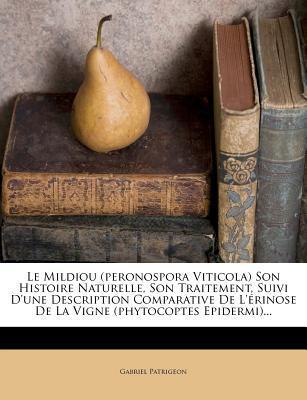
Le Mildiou Son Histoire Naturelle, Son Traitement, Suivi D'Une Description Comparative de L'Erinose de La Vigne
由
Gabriel Patrigeon
还没有评分
Science & Technology
Cookbooks
格式
平装书
页数
230
语言
法语
已发布
Jan 1, 2012
出版商
Nabu Press
ISBN-10
1273099192
ISBN-13
9781273099199
描述
In this insightful exploration, Gabriel Patrigeon delves into the complexities of downy mildew, scientifically known as Peronospora viticola. This work provides a thorough examination of its natural history, detailing its life cycle, environmental impact, and the challenges it poses to vineyards. Patrigeon's expertise shines through as he investigates the pathogen's behavior, making it accessible for both amateur and seasoned viticulturists.
Beyond the scientific analysis, the book also offers practical treatment methods for managing this pervasive vine disease. Patrigeon shares effective prevention strategies and discusses chemical and organic approaches, aiming to equip readers with the tools necessary to protect their crops. The author emphasizes sustainable practices, urging a balance between agricultural productivity and ecological responsibility.
Additionally, the work contrasts downy mildew with the less discussed pest, the vine erinosis, caused by Phytocoptes. This comparative description enriches the reader's understanding of both phenomena, highlighting their distinctive characteristics and implications for vine health.
Overall, the narrative combines scientific rigor with an approachable style, making it a valuable resource for anyone invested in the field of viticulture. Patrigeon's commitment to educating his audience about these vine threats demonstrates the necessity of ongoing research and adaptation in the ever-evolving landscape of agriculture.
Beyond the scientific analysis, the book also offers practical treatment methods for managing this pervasive vine disease. Patrigeon shares effective prevention strategies and discusses chemical and organic approaches, aiming to equip readers with the tools necessary to protect their crops. The author emphasizes sustainable practices, urging a balance between agricultural productivity and ecological responsibility.
Additionally, the work contrasts downy mildew with the less discussed pest, the vine erinosis, caused by Phytocoptes. This comparative description enriches the reader's understanding of both phenomena, highlighting their distinctive characteristics and implications for vine health.
Overall, the narrative combines scientific rigor with an approachable style, making it a valuable resource for anyone invested in the field of viticulture. Patrigeon's commitment to educating his audience about these vine threats demonstrates the necessity of ongoing research and adaptation in the ever-evolving landscape of agriculture.